First launch of Midea dishwasher
 Having connected the new PMM to the water supply, sewerage and electricity, the owners can’t wait to try out the device as soon as possible. There is no need to rush - it is important to perform the first startup of the Midea dishwasher correctly. We'll tell you how to put a dishwasher into operation correctly, something that users need to know about.
Having connected the new PMM to the water supply, sewerage and electricity, the owners can’t wait to try out the device as soon as possible. There is no need to rush - it is important to perform the first startup of the Midea dishwasher correctly. We'll tell you how to put a dishwasher into operation correctly, something that users need to know about.
What does the test program provide?
After purchasing a dishwasher, be sure to read the instructions for the machine. The user manual covers all the nuances: from the rules for connecting the device to communications, to an overview of the modes and functions programmed in the device’s memory. It also says that the first launch of the Midea PMM is done empty - the washing chamber must be empty.
It is advisable to entrust the installation of the Midea PMM to specialists. The technician will connect the device to utilities and adjust the housing to the level.
When running a test run, the dishwasher must be empty for a number of reasons:
- during factory assembly and subsequent sale, dust and dirt accumulate in the dishwasher - all this is washed out of the machine when first started;
- It will be easier for the user to identify the malfunction and eliminate it if the PMM is empty;
- the owner will receive primary skills in managing the PMM - this will help him avoid mistakes in the further operation of the device with cookware.
During the first launch, the dishwasher is washed from the inside, and all its components are tested for serviceability.
During the test cycle, the user must observe the operation of the dishwasher. You need to look at how water is poured into the chamber and whether the liquid is heated in a timely manner. Check whether the hose connections are airtight. If a leak is discovered, it should be repaired immediately.
It is not recommended to install the dishwasher into furniture before using it for the first time. It is better to leave the machine outside in order to have access to possible leakage areas. If the test cycle goes “smoothly”, the PMM can be considered ready for further operation.
Getting ready for a test launch
Before starting the PMM for the first time, make sure that there is no packaging material or information stickers in the washing chamber. Pay special attention to the foam balls, of which there are many inside Midea devices. It is also recommended to wipe the walls of the hopper with a damp cloth to remove visible dirt from the surfaces.
The test run is carried out without dishes, but the cleaning agent and special salt must be loaded into the appropriate dispensers.
A salt container is provided at the bottom of the working chamber. Crystals are necessary to soften hard tap water. The product prevents the appearance of limescale deposits inside the PMM. How to load granules correctly is described in the equipment instructions.
First, you need to purchase a special regenerating salt for PMM. An ordinary kitchen one will not work - it can damage the equipment. Followed by:
- pull out the lower loading basket from the hopper;
- find the tank cap and unscrew it;
- pour approximately 1 liter of clean water into the container;
- pour 500-700 grams of salt into the compartment;
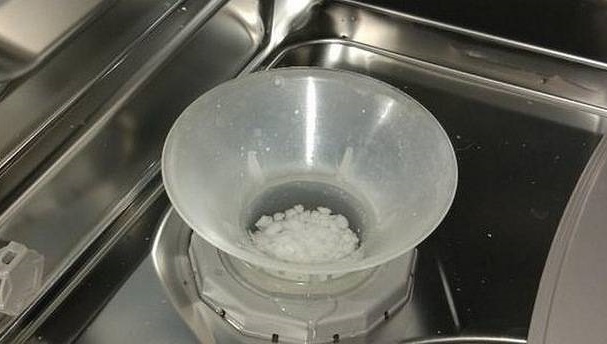
- screw the lid on;
- Wipe up any salt water that has spilled onto the bottom of the bin.
The next step is setting up the softener. How much salt the machine will “eat” is determined by the level of water hardness in the region. Find out the indicator (using special
indicator strips or by calling your local Vodokanal) and adjust the PMM sensor.
The detergent dispenser is located on the dishwasher door. You can use a special powder, dish gel or universal 3 in 1 tablets for PMM. Fill the dispenser following the recommended dosage on the formulation packaging.
You can purchase a product designed specifically for turning on the dishwasher for the first time. Such compositions are characterized by more powerful cleaning and disinfecting properties. They easily wash off oil, grease and other technical fluids that got inside the machine at the factory. This chemical is only suitable for a test idle cycle; it cannot be used for washing dishes.
Also, before the first start, it is recommended to remove the dishwasher filter, wash it in warm water and put it back in place. Check whether the PMM sprinklers rotate by turning them by hand. After this, you can turn on the machine.
Launching PMM for the first time
After loading salt and dish gel into the machine and checking the tightness of the connections, you can proceed to starting the test cycle. Make sure that the valve on the tee conducting water to the PMM is open. Next, plug the dishwasher power cord into the outlet.
The next step is choosing a program. For the first start, a long and high temperature mode is suitable. Therefore, choose the longest and “hottest” algorithm provided on your Midea dishwasher model.
Close the machine door tightly, activate the program and watch the dishwasher operate. If everything is in order, then: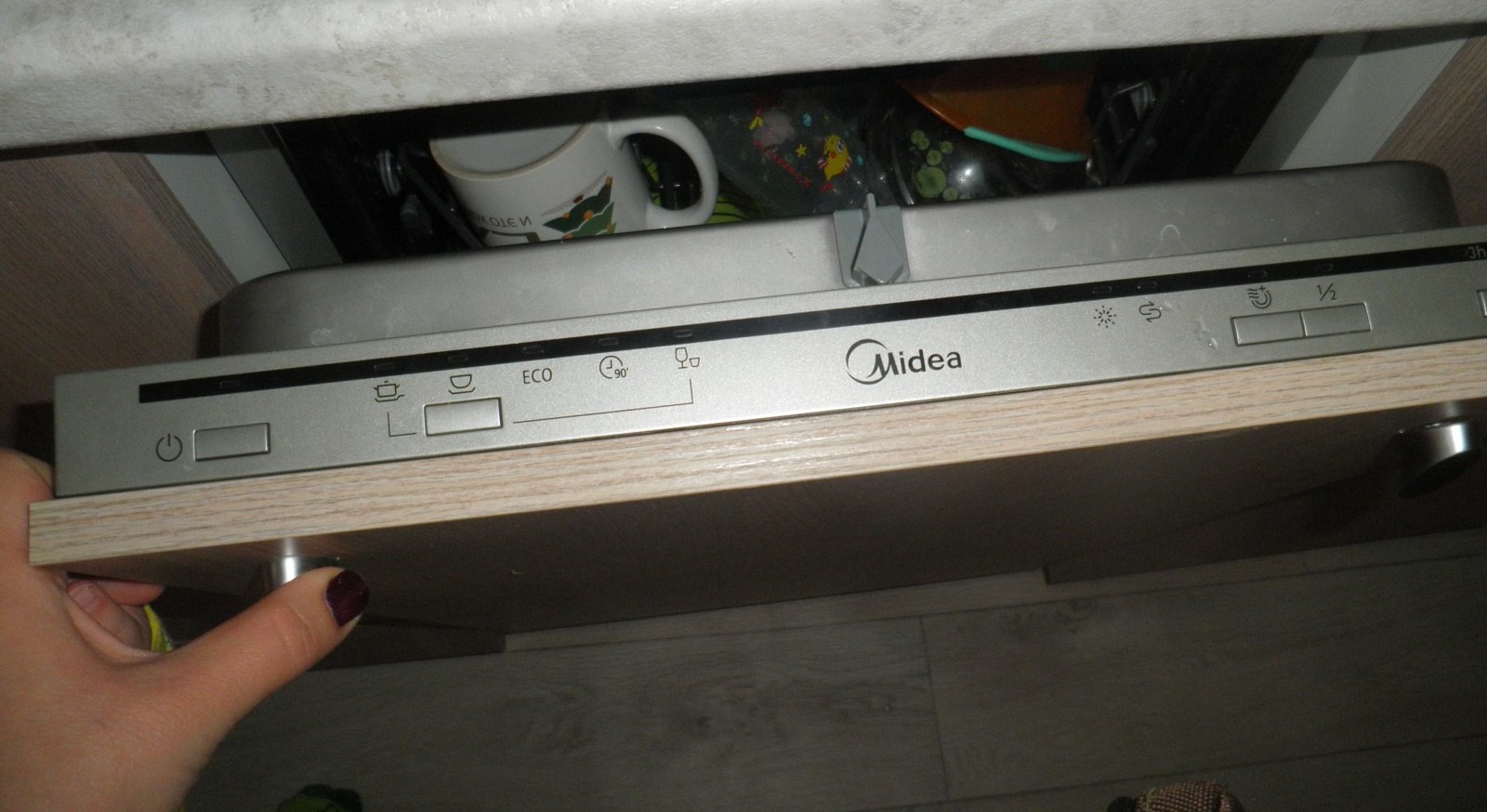
- water will flow continuously into the washing chamber;
- PMM will not stop the program;
- the water will warm up to the desired temperature within the allotted time (no more than 10-15 minutes);
- the waste liquid will be drained into the sewer without any problems;
- When drying is complete, there will be no moisture left in the washing chamber.
The machine will notify you of the end of the cycle with a sound signal.Open the door slightly and wait 5 minutes to allow the dish baskets to cool. After this, you can load the PMM and start a regular wash.
Full wash
After a successful test cycle, you can load dishes into the machine. Kitchen utensils are laid out inside the PMM according to certain rules. Basic recommendations are described in the equipment instructions.
Large dishes are placed in the lower basket:
- serving plates;
- tureens;
- pots;
- frying pans;
- covers;
- cutting boards;
- stewpans;
- baking trays
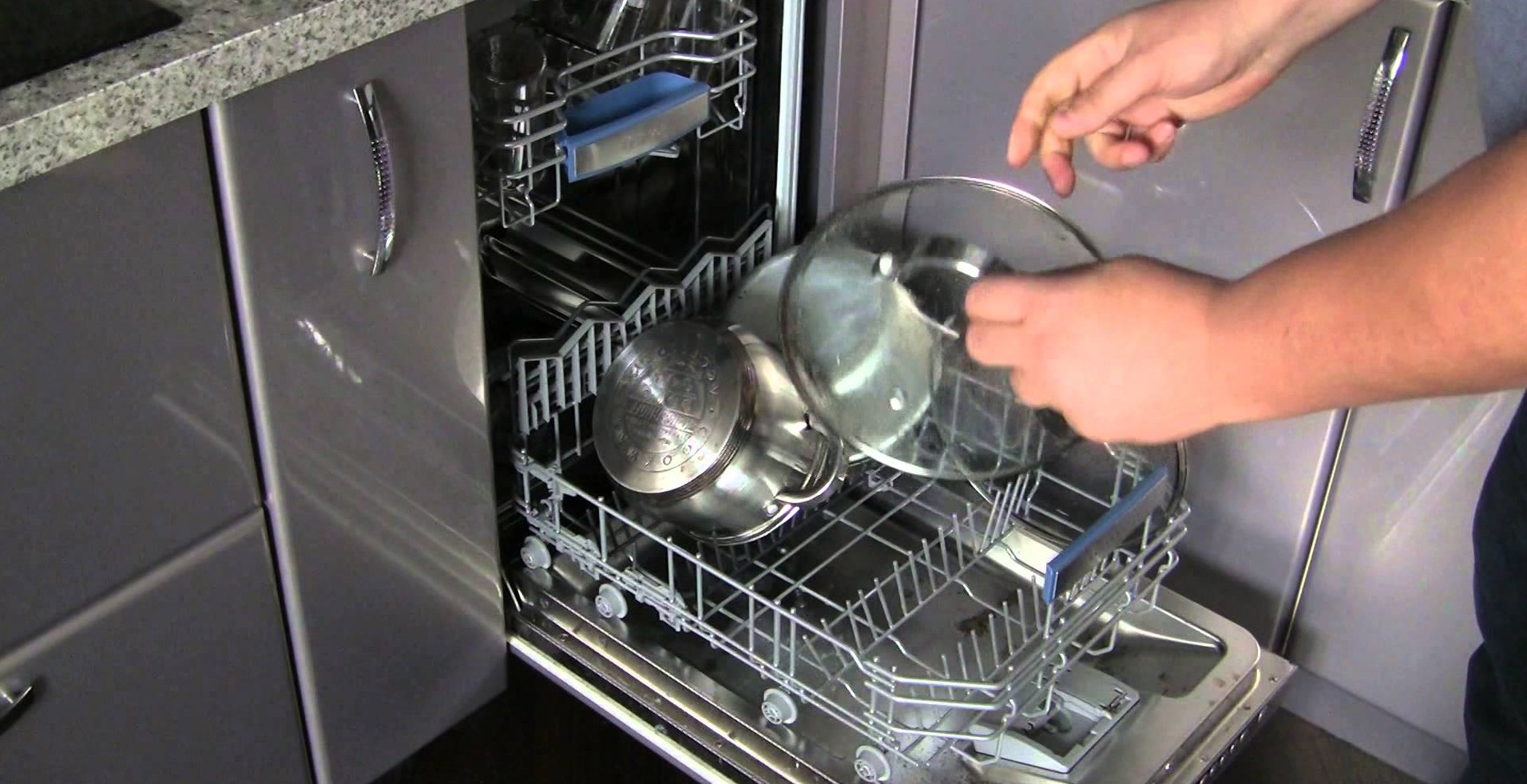
The upper tray is intended for:
- mugs, glasses, glasses;
- saucer;
- gravy boats;
- coffee cups;
- ladles, etc.
Deep dishes, including mugs and cups, are placed bottom up. This way, water will not stagnate inside objects. A small gap should be left between the plates so that they are washed on all sides. It is important to ensure that kitchen utensils do not interfere with the rotation of the PMM nozzles.
Do not overload the dishwasher; each Midea model is designed for a certain number of place settings.
Overloading is fraught not only with equipment breakdown. This also leads to a deterioration in the quality of cleaning dishes. Another unpleasant point is the increased consumption of kilowatts. That’s why it’s so important to follow the manufacturer’s recommendations and not stuff too many cutlery into the machine.
Do not neglect the choice of washing mode
It is very important to understand the programs available in the device’s memory. A description of all washing modes is presented in the equipment instructions. The set of algorithms may vary depending on the Midea model, but the basic cycles are provided on all machines.
The washing program should be selected depending on the type of dishes and the intensity of their contamination. Let's look at the main modes found on Midea machines.
- Soak cycle. The algorithm involves two stages: first the dishes are “soaked”, then the main wash begins. This mode is suitable for burnt pots, pans or items with dried pieces of food.
- Intensive mode. This is a high temperature program for very dirty cutlery. You cannot run the algorithm for washing plastic, crystal and products with a “capricious” coating.
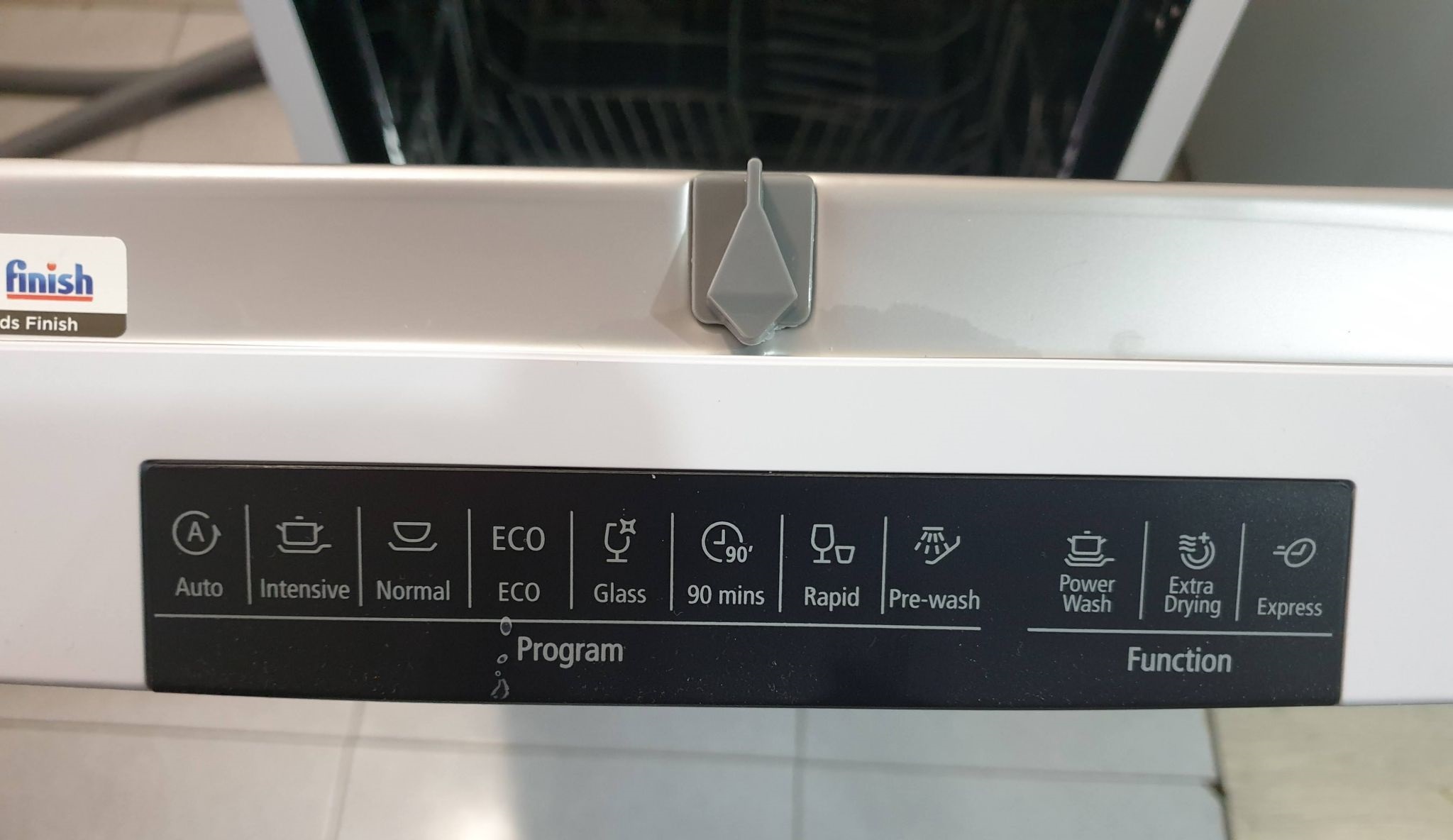
- Standard. Mode for cleaning lightly soiled dishes in medium-temperature water.
- Eco. When running this program, maximum savings of water, kilowatts and cleaning agent are ensured. Suitable only for lightly soiled equipment.
- Delicate mode. Designed for cleaning fragile dishes - plastic, porcelain, crystal, etc.
- Fast program. Suitable for rinsing saucers, mugs, glasses.
The quality of washing and the safety of the dishes will depend on the correct choice of mode. Therefore, be sure to study the characteristics of each program recorded in the memory of your Midea PMM.
Interesting:
Reader comments
- Share your opinion - leave a comment
Categories
Washing machine repair


For buyers

For users

Dishwasher


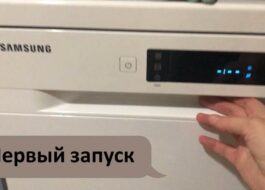














Add a comment